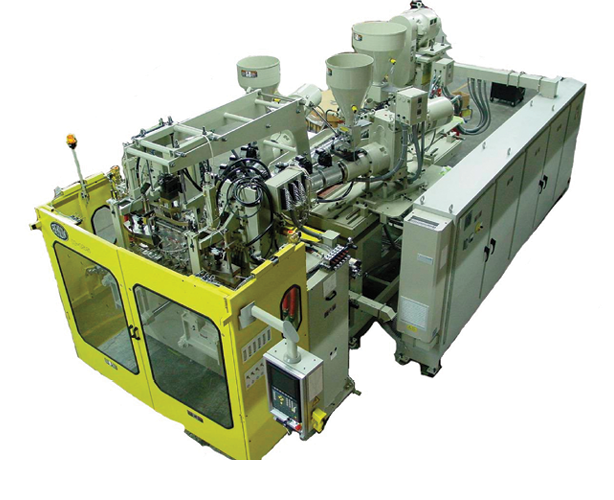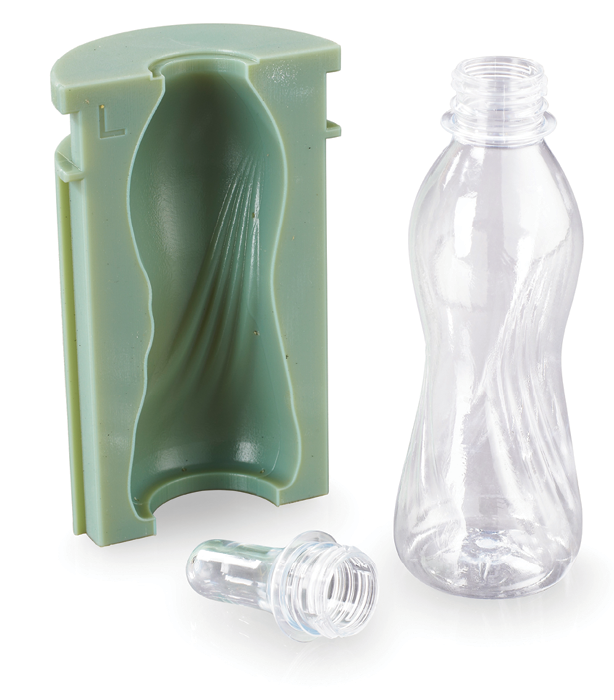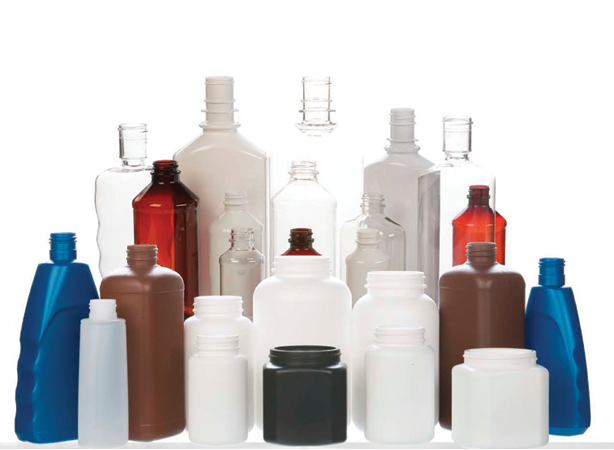Blow Molding Innovation at ABC
Learning about new technologies will be as easy as “1-2-3” at October’s Annual Blow Molding Conference, ABC 2015
Previous Article Next Article
By Nancy D. Lamontagne
Blow Molding Innovation at ABC
Learning about new technologies will be as easy as “1-2-3” at October’s Annual Blow Molding Conference, ABC 2015
Previous Article Next Article
By Nancy D. Lamontagne
Blow Molding Innovation at ABC
Learning about new technologies will be as easy as “1-2-3” at October’s Annual Blow Molding Conference, ABC 2015
Previous Article Next Article
By Nancy D. Lamontagne

Dow’s Continuum™ bimodal polyethylene resins reportedly allow a higher level of post-consumer recycled content to be used in blow-molded items such as detergent bottles (photo courtesy of The Dow Chemical Co.).

Dow’s Continuum™ bimodal polyethylene resins reportedly allow a higher level of post-consumer recycled content to be used in blow-molded items such as detergent bottles (photo courtesy of The Dow Chemical Co.).

Bekum America Corp. reportedly is developing a machine line for thin-wall, three-layer applications that incorporate recycled material into the inner layer (photo courtesy of Bekum).

Bekum America Corp. reportedly is developing a machine line for thin-wall, three-layer applications that incorporate recycled material into the inner layer (photo courtesy of Bekum).

The process of 3-D printing can be used to make prototype and short-run molds for bottles in hours rather than weeks (photo courtesy of Stratasys).

The process of 3-D printing can be used to make prototype and short-run molds for bottles in hours rather than weeks (photo courtesy of Stratasys).

Plastic containers protect drugs from the environment in which they are stored—and thus must meet rigorous standards (photo courtesy of Arch Plastics Packaging).

Plastic containers protect drugs from the environment in which they are stored—and thus must meet rigorous standards (photo courtesy of Arch Plastics Packaging).
The 31st Annual Blow Molding Conference will focus on innovation, efficiency, and sustainability. Blow molding experts will present on important new trends and innovations in packaging, medical, and industrial applications; machinery and design; materials and processing; and many other relevant topics. ABC 2015 will take place October 13-15 at the Sheraton Station Square Hotel in Pittsburgh, Pennsylvania, USA.
In addition to a full technical program, the conference will feature exhibits and excellent networking opportunities. Again this year, attendees, speakers, and sponsors can enter a part in the Annual Blow Molded Parts Competition. This competition helps facilitate technology and concept exchange in design, manufacturing methods, material applications, molding, and sustainability.
The Big Picture
ABC 2015’s keynote address features Tom Goeke, president and CEO of Milacron, who will discuss the state of the blow molding industry and how the company is addressing important trends and challenges. Goeke has more than 25 years of industry experience and previously served as COO of Seakeeper Inc. and CEO of Klöckner Pentaplast Group.
Plenary session speaker Daniel Meges of The Freedonia Group will give an overview on the growth outlook and competitive threats for blow-molded plastic containers. “Plastic has and will continue to gain against glass, paper, or metal containers, but flexible packaging is still taking share away from rigid [packaging] in a few segments, and so the biggest threat to blow-molded bottles probably stems from the ‘pouchification’ of some end-use markets,” says Meges, director of client solutions for Freedonia’s Custom Research Group.
Meges will also discuss the company’s outlook on several key end-use markets in the USA and globally, including trends in plastic resin usage. This includes PET and HDPE, as well as trends toward the increasing use of bioplastics in some settings.
“I think this conference is a great venue to get a broad overview of the industry both in terms of technology and market trends,” Meges says. He points out that buying all the individual reports that he will draw upon for his presentation would almost certainly cost more than the conference registration.
New Approaches to Sustainability
Plenary speaker Jeff Wooster from The Dow Chemical Company will give attendees a look at the future of recycling. “Our view on recycling for the future is that it is going to continue to grow, and we think that for it to grow we need a number of things to happen,” says Wooster, global sustainability leader for Dow Packaging & Specialty Plastics. “Dow is providing the enabling technology that allows companies to use recycled-content materials in as many different applications as possible and in as efficient of a way as possible.”
One enabling technology is Dow’s Continuum™ bimodal polyethylene family of resins. These resins allow a higher level of post-consumer recycled content in blow-molded items such as detergent bottles, while still protecting the product and the contents in the package for the intended shelf life for that product.
Dow takes a scientific approach to sustainability, meaning that the company looks not only at the resources needed to make its products but also at the performance its products deliver. “If we deliver a technology solution, we want to make sure that it not only meets the needs of the customers but also provides a meaningful and measurable and quantifiable economic and environment benefit to the people using those products,” Wooster says.
In terms of trends in this area, he says there has been a great deal of advancements in compatibilizers at Dow and other companies. He points to Dow’s leading role in providing various compatibilizers that enable its customers to mix different polymers together to make good, high-performance packaging.
“The take-home message that I hope the audience gets from my presentation is that at Dow we’re working hard to make it possible for companies to … use recycled materials, mix different recycled materials together, improve the physical properties and physical performance of those materials, and meet whatever needs they might have to allow them to do this,” adds Wooster.
“Burying the Recycled Content”
Thin-wall, three-layer molding with post-consumer regrind is the topic of the presentation by Joe Slenk and Miguel Vivas from Bekum America Corporation. The company is developing a machine line for a thin-wall, three-layer application that’s optimized for cost savings by using thinner layers than usual. At the conference, they will present a case study of their findings from validating this new machine line, which uses a spiral flow head.
“We’re using a three-layer structure to bury the recycled content,” says Slenk, an applications engineer at the company. “The unique thing about this project is that it is already a pretty thin container, so getting the post-consumer regrind into the container in a way that it can’t be seen through the other layers is challenging.”
Slenk says that the conference will have something for everyone—from company executive to machine operator. Along with the coverage of new technology and trends, “one of the most popular items is the [ABC’s “Plastics 101”]
sessions, which are great for someone new in the industry or someone who wants to learn more about an aspect of blow molding that they’re not familiar with.”
Plastics 101 talks will provide overviews of polyolefins, reciprocating screw technology, screw design, and PET. Topics also will include engineering thermoplastics and the recycling of PET and polyolefins. And Slenk will be presenting a “101” on shuttle blow molding technology.
3-D Printing Molds & Parts
Ken Chvilicek, account manager at TriMech, will give both a 101 session and an application talk on 3-D printing for blow molding. The printers can be useful for creating concept models, functional prototypes, and manufacturing tools, as well as end-use parts.
During the 101 session, Chvilicek will discuss the basics of 3-D printing and present setups that are feasible for most blow molders in terms of cost and application. Although 3-D printers are available at many price points, from consumer level to professional machines, he will present what can be accomplished with an investment between $50,000 and $200,000.
For his application presentation, Chvilicek will discuss how a 3-D printer from Stratasys can create molds for prototyping and short-run production. He’ll show case studies from customers as well of videos of 3-D printing in action. “The biggest savings in using a 3-D printer is in time,” he says. “[A printer] can produce a mold for testing within a day, whereas most tooling processes can take weeks or longer.”
He points out that 3-D printers also help lower the cost of having to fix or create a new mold if a mold doesn’t work correctly. And 3-D printing increases privacy and confidentiality by keeping everything in-house. Moreover, it allows a user to try out a number of variations before committing to hard tooling.
“We’re going to demonstrate 3-D printing with Digital ABS, which is only available from Stratasys. With this material, the surface finish of the part is such that you won’t have to do any post-processing, such as filling or sealing. The part comes off the printer ready to be used,” Chvilicek adds.
Pharmaceutical Applications
Rama Etekallapalli from Arch Plastics Packaging will present “Plastic Container Testing for Pharmaceutical Use,” which will focus on why the pharmaceutical industry considers plastic containers a primary packaging material. Arch Plastics produces and supplies plastic containers for the pharmaceutical and personal care industries.
“With plastic containers, different properties [can] be obtained by altering the molecular weight and geometry of a polymer by adding plasticizers, fillers, lubricants, and
other chemical substances, which will have modifying effects on the final container,” explains Etekallapalli, who is in charge of plant quality at the company. “Such a broad spectrum of possibilities makes a plastic container a first choice in the pharmaceutical industry.”
Plastic is also good at protecting a drug from the effects of light, water vapor, gases, and mechanical damage both before and during the use of the drug. Etekallapalli points out that it’s important that the components of the container not interact with the drugs, so that the drug’s safety and efficacy is protected.
For applications in the pharmaceutical industry, containers should be tested for U.S. Pharmacopeial Convention (USP) standards 661 and 671, which define the packaging properties that will maintain the highest level of product quality. Some of the potential problems from containers include sorption, extraction, permeation, photo-degradation, and polymer modification.
“At Arch Plastics Packaging, all of our stock bottles meet the USP 661 and 671 standards,” Etekallapalli says. “The raw materials used for manufacturing the containers—currently [we’re] using extrusion and injection-stretch blow molding processes—are brought directly from the prime U.S. manufacturers at a premium price to guarantee products that meet or exceed the customer requirements.”
See more details about the ABC 2015 program atwww.blowmoldingdivision.org.